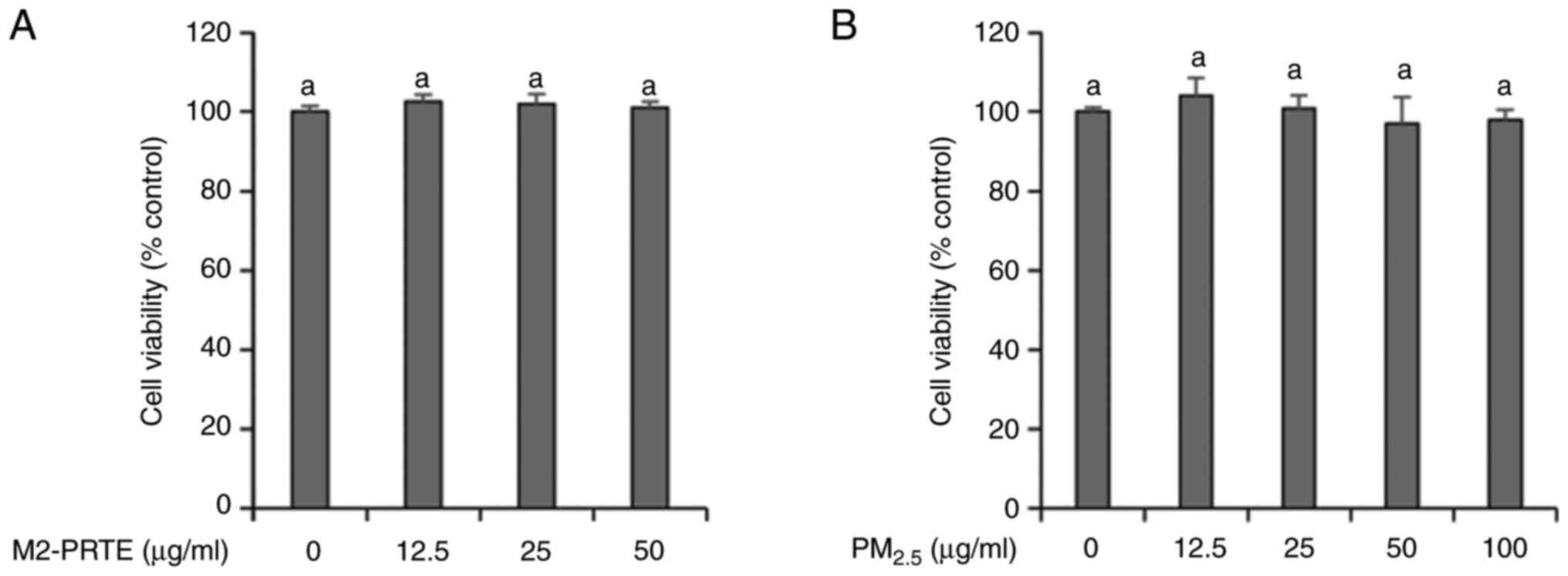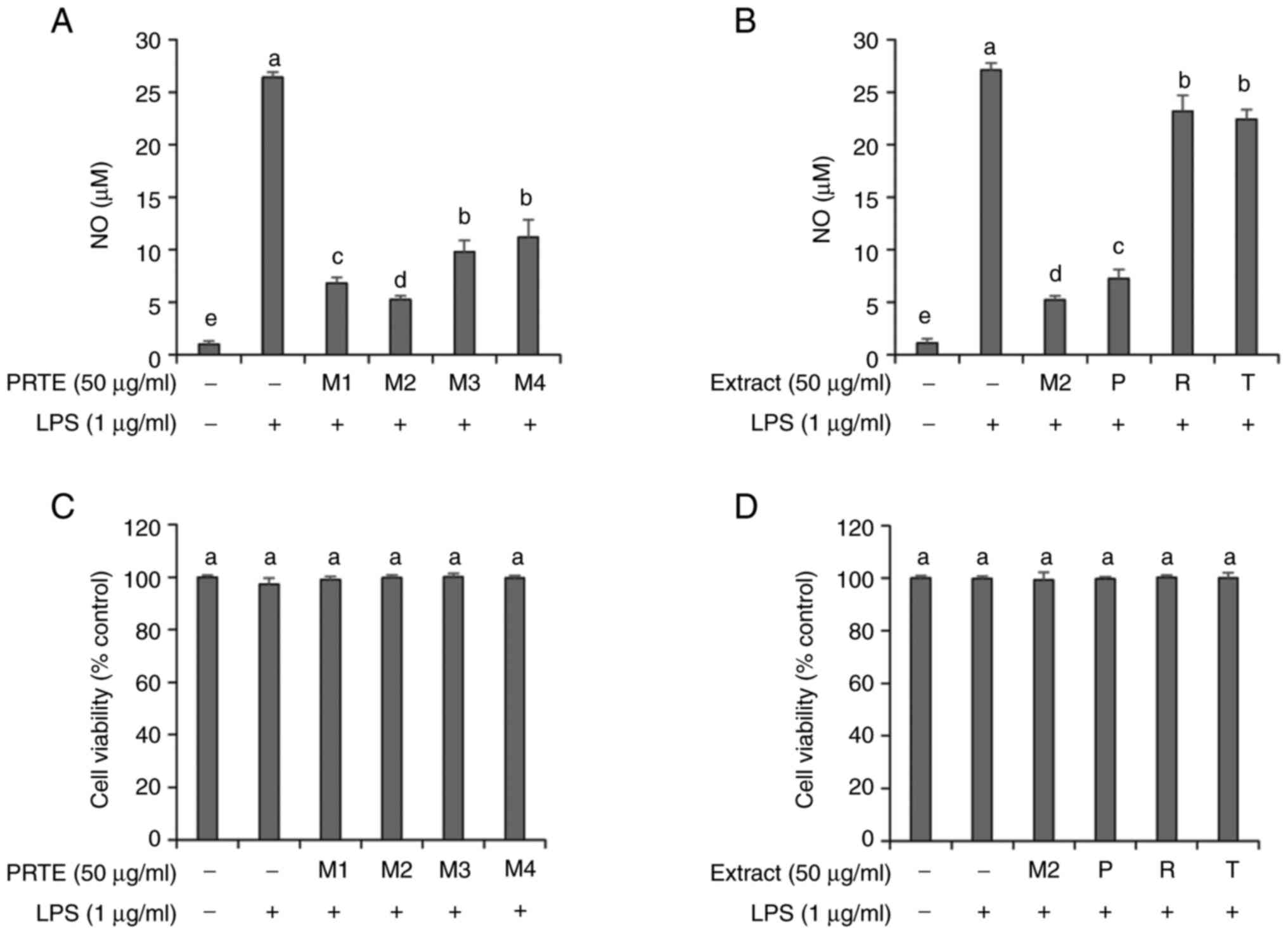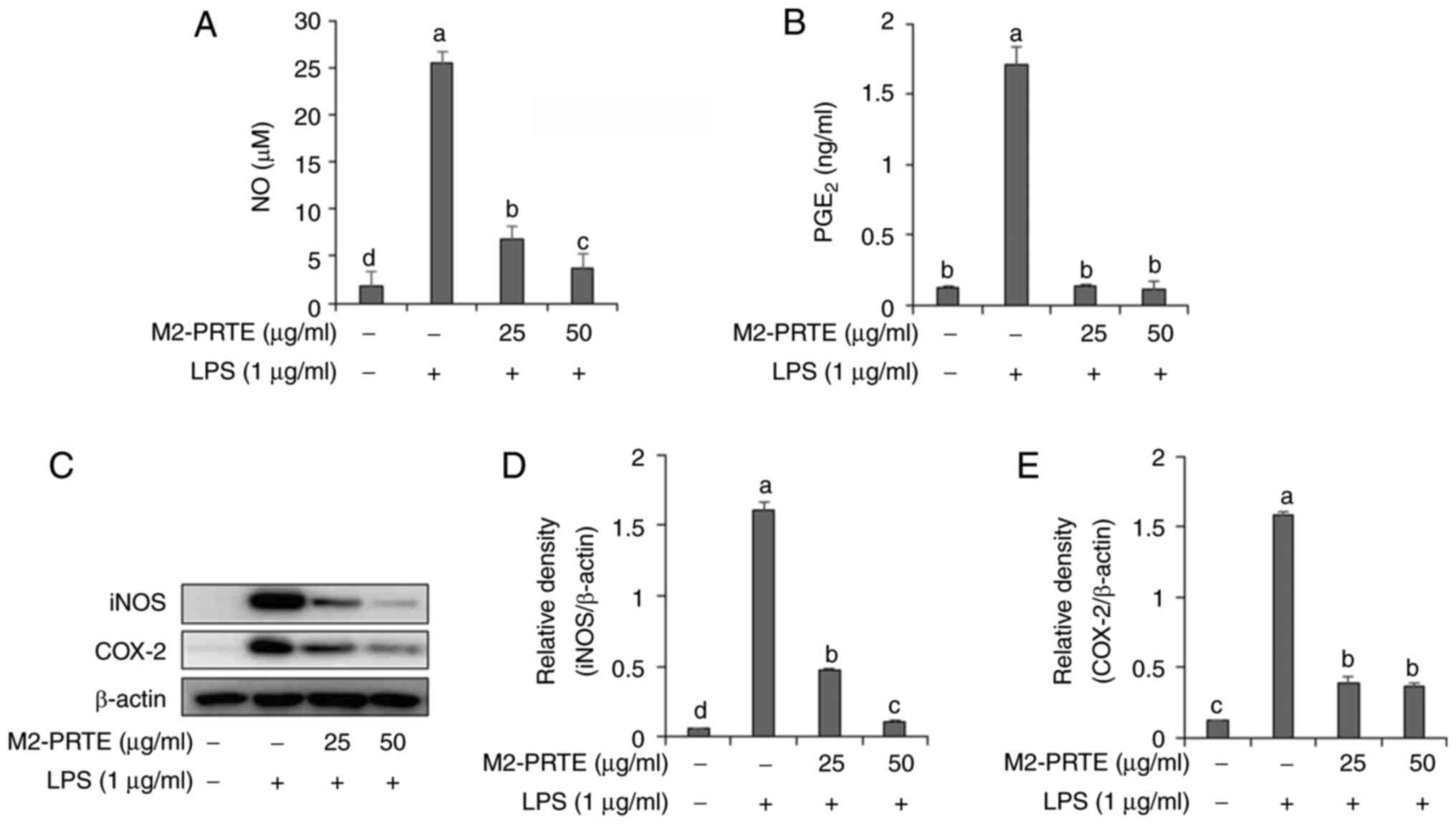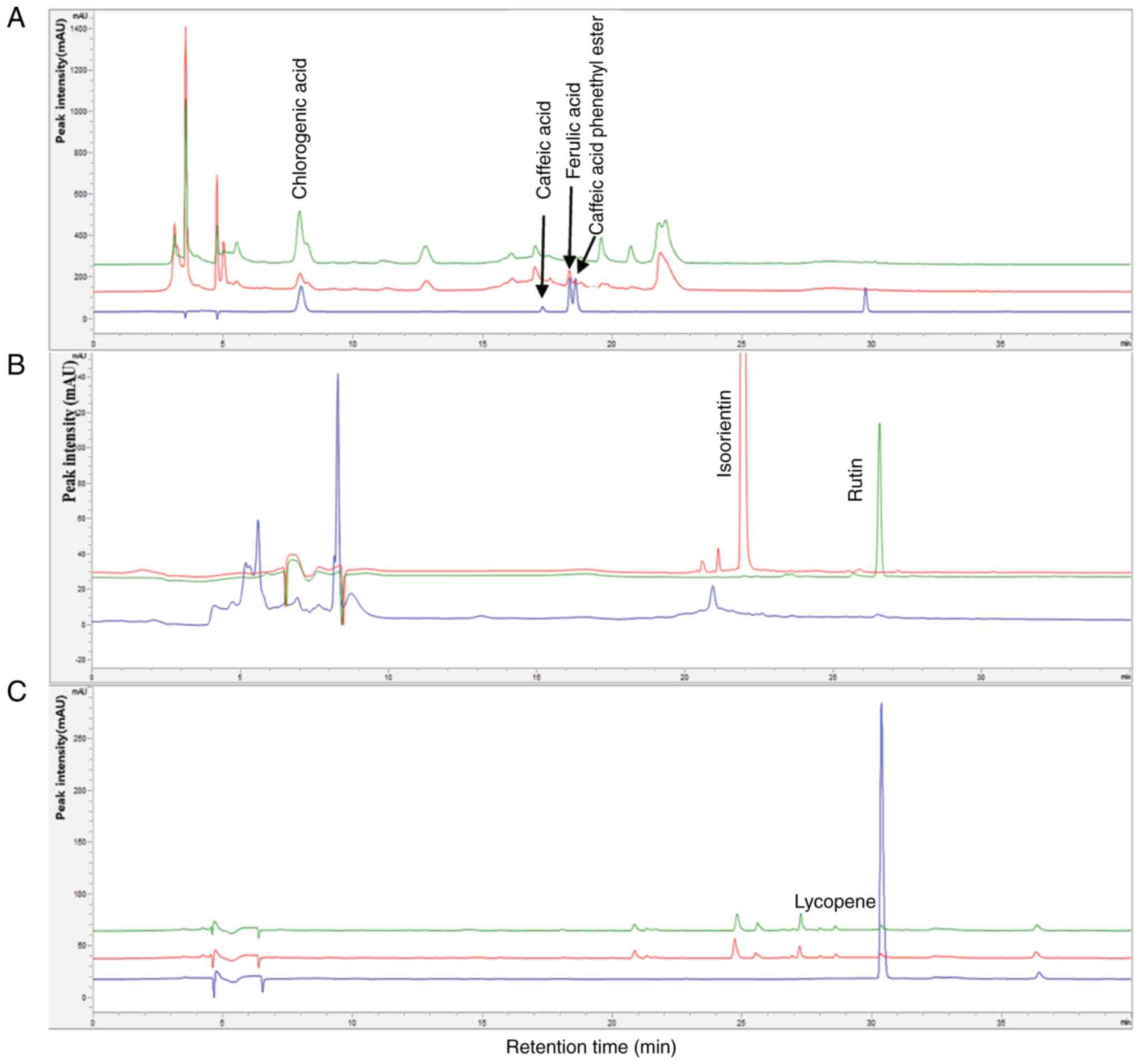|
1
|
Manisalidis I, Stavropoulou E,
Stavropoulos A and Bezirtzoglou E: Environmental and health impacts
of air pollution: A review. Front Public Health.
8(14)2020.PubMed/NCBI View Article : Google Scholar
|
|
2
|
Adams K, Greenbaum DS, Shaikh R, van Erp
AM and Russell AG: Particulate matter components, sources, and
health: Systematic approaches to testing effects. J Air Waste Manag
Assoc. 65:544–558. 2015.PubMed/NCBI View Article : Google Scholar
|
|
3
|
Bălă GP, Râjnoveanu RM, Tudorache E,
Motișan R and Oancea C: Air pollution exposure-the (in)visible risk
factor for respiratory diseases. Environ Sci Pollut Res Int.
28:19615–19628. 2021.PubMed/NCBI View Article : Google Scholar
|
|
4
|
Kim H, Kim WH, Kim YY and Park HY: Air
pollution and central nervous system disease: A review of the
impact of fine particulate matter on neurological disorders. Front
Public Health. 8(575330)2020.PubMed/NCBI View Article : Google Scholar
|
|
5
|
Münzel T, Hahad O, Sørensen M, Lelieveld
J, Duerr GD, Nieuwenhuijsen M and Daiber A: Environmental risk
factors and cardiovascular diseases: A comprehensive expert review.
Cardiovasc Res. 118:2880–2902. 2022.PubMed/NCBI View Article : Google Scholar
|
|
6
|
Li Z, Wen Q and Zhang R: Sources, health
effects and control strategies of indoor fine particulate matter
(PM2.5): A review. Sci Total Environ. 586:610–622.
2017.PubMed/NCBI View Article : Google Scholar
|
|
7
|
Giustarini D, Dalle-Donne I, Tsikas D and
Rossi R: Oxidative stress and human diseases: Origin, link,
measurement, mechanisms, and biomarkers. Crit Rev Clin Lab Sci.
46:241–281. 2009.PubMed/NCBI View Article : Google Scholar
|
|
8
|
Liu K, Hua S and Song L: PM2.5 exposure
and asthma development: The key role of oxidative stress. Oxid Med
Cell Longev. 2022(3618806)2022.PubMed/NCBI View Article : Google Scholar
|
|
9
|
Xu Z, Ding W and Deng X: PM2.5,
fine particulate matter: A novel player in the
epithelial-mesenchymal transition? Front Physiol.
10(1404)2019.PubMed/NCBI View Article : Google Scholar
|
|
10
|
Muchtaridi M, Az-Zahra F, Wongso H,
Setyawati LU, Novitasari D and Ikram EHK: Molecular mechanism of
natural food antioxidants to regulate ROS in treating cancer: A
review. Antioxidants (Basel). 13(207)2024.PubMed/NCBI View Article : Google Scholar
|
|
11
|
Shin JY, Kang ES, Park JH, Cho BO and Jang
SI: Anti-inflammatory effect of red ginseng marc, Artemisia
scoparia, Paeonia japonica and Angelica gigas extract mixture in
LPS-stimulated RAW 264.7 cells. Biomed Rep. 17(63)2022.PubMed/NCBI View Article : Google Scholar
|
|
12
|
Sasidharan S, Nishanth KS and Nair HJ:
Ethanolic extract of Caesalpinia bonduc seeds triggers yeast
metacaspase-dependent apoptotic pathway mediated by mitochondrial
dysfunction through enhanced production of calcium and reactive
oxygen species (ROS) in Candida albicans. Front Cell Infect
Microbiol. 12(970688)2022.PubMed/NCBI View Article : Google Scholar
|
|
13
|
Yu M, Gouvinhas I, Rocha J and Barros
AIRNA: Phytochemical and antioxidant analysis of medicinal and food
plants towards bioactive food and pharmaceutical resources. Sci
Rep. 11(10041)2021.PubMed/NCBI View Article : Google Scholar
|
|
14
|
Šuran J, Cepanec I, Mašek T, Radić B,
Radić S, Tlak Gajger I and Vlainić J: Propolis extract and its
bioactive compounds-from traditional to modern extraction
technologies. Molecules. 26(2930)2021.PubMed/NCBI View Article : Google Scholar
|
|
15
|
Zullkiflee N, Taha H and Usman A:
Propolis: Its role and efficacy in human health and diseases.
Molecules. 27(6120)2022.PubMed/NCBI View Article : Google Scholar
|
|
16
|
Pahlavani N, Malekahmadi M, Firouzi S,
Rostami D, Sedaghat A, Moghaddam AB, Ferns GA, Navashenaq JG,
Reazvani R, Safarian M and Ghayour-Mobarhan M: Molecular and
cellular mechanisms of the effects of Propolis in inflammation,
oxidative stress and glycemic control in chronic diseases. Nutr
Metab (Lond). 17(65)2020.PubMed/NCBI View Article : Google Scholar
|
|
17
|
Jiang Y, Zeng KW, David B and Massiot G:
Constituents of Vigna angularis and their in vitro
anti-inflammatory activity. Phytochemistry. 107:111–118.
2014.PubMed/NCBI View Article : Google Scholar
|
|
18
|
Yao Y, Cheng X, Wang S, Wang L and Ren G:
Influence of altitudinal variation on the antioxidant and
antidiabetic potential of azuki bean (Vigna angularis). Int J Food
Sci Nutr. 63:117–124. 2012.PubMed/NCBI View Article : Google Scholar
|
|
19
|
Chu L, Zhao P, Wang K, Zhao B, Li Y, Yang
K and Wan P: VaSDC1 is involved in modulation of flavonoid
metabolic pathways in black and red seed coats in Adzuki Bean
(Vigna angularis L.). Front Plant Sci. 12(679892)2021.PubMed/NCBI View Article : Google Scholar
|
|
20
|
Włodarczyk K, Smolińska B and Majak I: The
antioxidant potential of tomato plants (Solanum lycopersicum L.)
under nano-ZnO treatment. Int J Mol Sci. 24(11833)2023.PubMed/NCBI View Article : Google Scholar
|
|
21
|
Kamiloglu S, Demirci M, Selen S, Toydemir
G, Boyacioglu D and Capanoglu E: Home processing of tomatoes
(Solanum lycopersicum): Effects on in vitro bioaccessibility of
total lycopene, phenolics, flavonoids, and antioxidant capacity. J
Sci Food Agric. 94:2225–2233. 2014.PubMed/NCBI View Article : Google Scholar
|
|
22
|
Del Giudice R, Petruk G, Raiola A, Barone
A, Monti DM and Rigano MM: Carotenoids in fresh and processed
tomato (Solanum lycopersicum) fruits protect cells from oxidative
stress injury. J Sci Food Agric. 97:1616–1623. 2017.PubMed/NCBI View Article : Google Scholar
|
|
23
|
Blois MS: Antioxidant determinations by
the use of a stable free radical. Nature. 181:1199–1200. 1958.
|
|
24
|
Re R, Pellegrini N, Proteggente A, Pannala
A, Yang M and Rice-Evans C: Antioxidant activity applying an
improved ABTS radical cation decolorization assay. Free Radic Biol
Med. 26:1231–1237. 1999.PubMed/NCBI View Article : Google Scholar
|
|
25
|
Rahman MM, Islam MB, Biswas M and Khurshid
Alam AH: In vitro antioxidant and free radical scavenging activity
of different parts of Tabebuia pallida growing in Bangladesh. BMC
Res Notes. 8(621)2015.PubMed/NCBI View Article : Google Scholar
|
|
26
|
Ma X, Deng D and Chen W: Inhibitors and
Activators of SOD, GSH-Px, and CAT. In: Enzyme Inhibitors and
Activators. Senturk M (ed). IntechOpen, Rijeka, 2017.
|
|
27
|
Zhao H, Zhang R, Yan X and Fan K:
Superoxide dismutase nanozymes: An emerging star for
anti-oxidation. J Mater Chem B. 9:6939–6957. 2021.PubMed/NCBI View Article : Google Scholar
|
|
28
|
Pei J, Pan X, Wei G and Hua Y: Research
progress of glutathione peroxidase family (GPX) in redoxidation.
Front Pharmacol. 14(1147414)2023.PubMed/NCBI View Article : Google Scholar
|
|
29
|
Al-Temimi AA, Al-Mossawi AE, Al-Hilifi SA,
Korma SA, Esatbeyoglu T, Rocha JM and Agarwal V: Glutathione for
food and health applications with emphasis on extraction,
identification, and quantification methods: A review. Metabolites.
13(465)2023.PubMed/NCBI View Article : Google Scholar
|
|
30
|
Gewalting MT and Kojda G: Vasoprotection
by nitric oxide: Mechanisms and therapeutic potential. Cardiovasc
Res. 55:250–260. 2002.PubMed/NCBI View Article : Google Scholar
|
|
31
|
van der Vliet A, Eiserich JP and Cross CE:
Nitric oxide: A pro-inflammatory mediator in lung disease? Respir
Res. 1:67–72. 2000.PubMed/NCBI View
Article : Google Scholar
|
|
32
|
Liu NM, Miyashita L, Sanak M, Barratt B
and Grigg J: Prostaglandin E2 and phagocytosis of
inhaled particulate matter by airway macrophages in cystic
fibrosis. J Cyst Fibros. 20:673–677. 2021.PubMed/NCBI View Article : Google Scholar
|
|
33
|
Kim JB, Han AR, Park EY, Kim JY, Cho W,
Lee J, Seo EK and Lee KT: Inhibition of LPS-induced iNOS, COX-2 and
cytokines expression by poncirin through the NF-kappaB inactivation
in RAW 264.7 macrophage cells. Biol Pharm Bull. 30:2345–2351.
2007.PubMed/NCBI View Article : Google Scholar
|
|
34
|
Ishijima T and Nakajima K: Inflammatory
cytokines TNFα, IL-1β, and IL-6 are induced in endotoxin-stimulated
microglia through different signaling cascades. Sci Prog.
104(368504211054985)2021.PubMed/NCBI View Article : Google Scholar
|
|
35
|
Lopez-Castejon G and Brough D:
Understanding the mechanism of IL-1β secretion. Cytokine Growth
Factor Rev. 22:189–195. 2011.PubMed/NCBI View Article : Google Scholar
|
|
36
|
Parameswaran N and Patial S: Tumor
necrosis factor-α signaling in macrophages. Crit Rev Eukaryot Gene
Expr. 20:87–103. 2010.PubMed/NCBI View Article : Google Scholar
|
|
37
|
Tanaka T, Narazaki M and Kishimoto T: IL-6
in inflammation, immunity, and disease. Cold Spring Harb Perspect
Biol. 6(a016295)2014.PubMed/NCBI View Article : Google Scholar
|
|
38
|
Xu W, Lu H, Yuan Y, Deng Z, Zheng L and Li
H: The antioxidant and anti-inflammatory effects of flavonoids from
propolis via Nrf2 and NF-κB pathways. Foods.
11(2439)2022.PubMed/NCBI View Article : Google Scholar
|
|
39
|
Kulawik A, Cielecka-Piontek J and Zalewski
P: The importance of antioxidant activity for the health-promoting
effect of lycopene. Nutrients. 15(3821)2023.PubMed/NCBI View Article : Google Scholar
|
|
40
|
Chao WW, Chung YC, Shih IP, Wang HY, Chou
ST and Hsu CK: Red bean extract inhibits lipopolysaccharide-induced
inflammation and H2O2-Induced oxidative
stress in RAW 264.7 macrophages. J Med Food. 18:724–730.
2015.PubMed/NCBI View Article : Google Scholar
|















